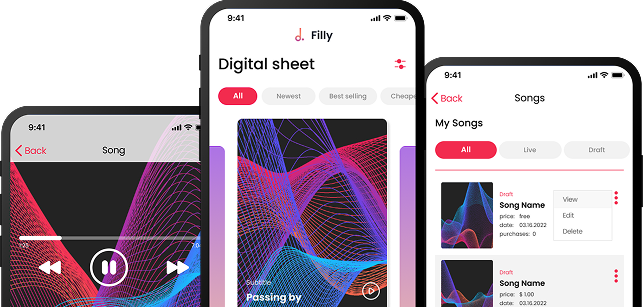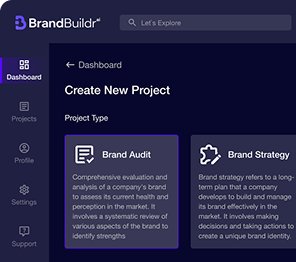Building a Minimum Viable Product (MVP) is one of the most effective strategies for startups and businesses to test a product idea quickly and efficiently. An MVP allows you to gather user feedback, validate assumptions, and refine your product before fully committing to extensive development. However, many companies make critical mistakes during the MVP process, which can result in wasted time, effort, and resources.
In this article, we’ll cover the most common mistakes made when developing an MVP and provide practical tips on how to avoid them to ensure a successful product launch.
%20(1).avif)
1. Building an Overly Complex MVP
One of the most common mistakes when developing an MVP is packing too many features into the initial release. Many teams need to understand the purpose of an MVP and end up building a product that is far too complex. The goal of an MVP is to test a product's core functionality with the minimum number of features necessary to solve the user’s primary problem.
Why This is a Problem:
- Delayed Launch: Adding too many features delays the launch, reducing the time you have to gather feedback.
- Increased Development Costs: Complex MVPs take longer to develop, increasing costs before you even know if the product will succeed.
- Confusion for Users: Users may struggle to understand the product if too many features are introduced at once, leading to a poor user experience.
How to Avoid It:
- Focus on Core Features: Identify the single most important problem your product solves and focus on the features that directly address that problem. Leave out any non-essential features for future iterations.
- Use the MoSCoW Method: Prioritize features by categorizing them into Must Have, Should Have, Could Have, and Won’t Have. Only include Must Have features in the MVP.
- Define Clear MVP Goals: Ensure that the purpose of the MVP is to test assumptions and gather feedback, not to release a fully-featured product.

2. Skipping User Research
Another common mistake is skipping the user research phase. Many companies believe they already know what their users want, only to discover after launching the MVP that their assumptions were wrong. Without proper user research, you risk building a product that doesn’t align with your target audience’s needs.
Why This is a Problem:
- Mismatched Product-Market Fit: If the product doesn’t solve a real problem for users, it will struggle to gain traction in the market.
- Wasted Development Efforts: Developing an MVP based on assumptions rather than data can result in wasted time and resources if the product fails to resonate with users.
How to Avoid It:
- Conduct User Interviews: Speak directly with potential users to understand their pain points, needs, and expectations. Use this information to guide the development of your MVP.
- Create User Personas: Develop detailed user personas to ensure your MVP is built with a clear understanding of your target audience’s behavior and motivations.
- Test Early and Often: Use wireframes or prototypes to validate concepts with real users before building the MVP. This helps ensure that your MVP is grounded in real user insights.
3. Neglecting to Define Success Metrics
Many teams fail to define clear success metrics for their MVP, making it difficult to measure its effectiveness once it’s launched. Without metrics, it’s impossible to know whether your MVP has achieved its goals, which features to prioritize in future iterations, or when to pivot.
Why This is a Problem:
- Unclear Product Direction: Without success metrics, it’s difficult to evaluate user feedback or determine what aspects of the product need improvement.
- Wasted Resources: Without data to guide decisions, teams may end up focusing on the wrong areas, wasting resources on features that don’t provide value.
How to Avoid It:
- Set Specific KPIs: Define key performance indicators (KPIs) before launching the MVP. Common KPIs include user acquisition rates, user retention rates, conversion rates, and engagement metrics.
- Align Metrics with Business Goals: Ensure that the success metrics you choose are aligned with your overall business objectives. For example, if your goal is to validate demand, focus on user sign-ups or purchase intent.
- Use Analytics Tools: Leverage tools like Google Analytics, Mixpanel, or Amplitude to track user behavior and measure the performance of your MVP.

4. Overlooking User Feedback
An MVP is designed to gather feedback from real users, yet many teams overlook this step. Whether due to a lack of resources, time, or proper processes, failing to collect and act on user feedback is a missed opportunity to refine and improve the product.
Why This is a Problem:
- Missed Insights: Ignoring user feedback means missing out on valuable insights that could guide product improvements and ensure a better product-market fit.
- Decreased User Engagement: If users feel that their feedback is not being heard, they may lose interest in the product and stop using it.
How to Avoid It:
- Create Feedback Channels: Set up clear feedback channels such as in-app surveys, customer interviews, or email questionnaires to gather feedback from users.
- Prioritize User Feedback: Analyze feedback regularly to identify common themes and areas for improvement. Prioritize actionable feedback that aligns with your product goals.
- Iterate Based on Feedback: Use feedback to inform product iterations. By continuously improving the MVP based on real user insights, you can create a product that better meets user needs over time.

5. Targeting the Wrong Audience
Releasing an MVP to the wrong audience can skew your feedback and provide inaccurate data, leading you to make poor product decisions. If the MVP is tested with users who don’t represent your target audience, their feedback may not be relevant to the success of the product in the intended market.
Why This is a Problem:
- Misleading Feedback: Feedback from users outside of your target audience may not reflect the needs or preferences of your actual users.
- Inaccurate Product Validation: If your MVP is validated by the wrong audience, you may invest in features that don’t resonate with your intended market.
How to Avoid It:
- Identify Early Adopters: Focus on getting your MVP into the hands of early adopters who are part of your target audience. These users are more likely to provide relevant feedback and understand the value of your product.
- Segment Your Audience: Use audience segmentation to ensure that the feedback you receive is from users who represent your core demographic.
- Beta Testing with Targeted Users: Run a beta test with a small, targeted group of users who match your target market to gather more accurate and actionable feedback.

6. Ignoring Technical Scalability
While the MVP is meant to be a simplified version of the product, many teams overlook the importance of building with scalability in mind. As your MVP gains traction and user adoption increases, technical issues such as slow load times, crashes, or performance bottlenecks can arise if the architecture isn’t designed to scale.
Why This is a Problem:
- Poor User Experience: As more users adopt your product, technical problems can lead to a frustrating user experience, resulting in churn.
- Expensive Rebuilds: Failing to plan for scalability early can lead to costly rebuilds or infrastructure upgrades later.
How to Avoid It:
- Plan for Growth: Even though your MVP is simple, consider future growth and ensure that the technology stack can scale as user adoption increases.
- Use Scalable Solutions: Leverage cloud services like AWS, Google Cloud, or Azure that offer scalable infrastructure and flexible storage solutions.
- Monitor Performance: Use performance monitoring tools like New Relic or Datadog to track system performance and identify potential bottlenecks early.
7. Launching Too Late (or Too Early)
Timing is everything when it comes to launching an MVP. Launching too early, before the product is ready, can lead to a poor user experience and negative feedback. On the other hand, launching too late may cause you to miss opportunities to gather valuable feedback from users and iterate based on real-world usage.
Why This is a Problem:
- Too Early: A premature launch may result in a product that is too buggy or incomplete to provide value, damaging your brand’s reputation.
- Too Late: Waiting too long to launch an MVP can cause you to lose valuable time and fall behind competitors.
How to Avoid It:
- Focus on Readiness, Not Perfection: The MVP should be functional and valuable but doesn’t need to be perfect. Launch once the core features are ready to be tested.
- Set a Timeline for Launch: Define a clear timeline for when the MVP will be ready for release, ensuring that there’s enough time for development but avoiding unnecessary delays.
- Test Internally First: Run internal tests with your team to identify and fix major bugs before releasing the MVP to users.
8. Failing to Iterate
One of the core principles of an MVP is iteration. Unfortunately, many teams treat the MVP as a one-time launch rather than an ongoing process of improvement. After launching the MVP, it’s essential to iterate on the product based on user feedback, performance data, and market trends.
Why This is a Problem:
- Stagnation: Without continuous improvement, the product may stagnate, losing users and failing to stay competitive.
- Missed Opportunities: Ignoring feedback and failing to iterate means missing opportunities to refine the product and improve its chances of long-term success.
How to Avoid It:
- Adopt an Agile Approach: Use agile development practices to continuously improve the MVP in iterative sprints.
- Gather Feedback Regularly: Set up mechanisms to gather feedback from users on an ongoing basis and use this feedback to guide product development.
- Update the Product Roadmap: Continuously update your product roadmap to reflect new priorities based on user feedback and market conditions.
An MVP should be your product’s foundation, not its final form. Avoid common pitfalls like building too many features, skipping user research, or overlooking feedback. With the right approach, your MVP can be a powerful tool for validating ideas and guiding product evolution.
Conclusion
Developing an MVP is a powerful way to test your product idea and gather valuable insights, but it’s essential to avoid common mistakes that can derail the process. By focusing on the core features, conducting thorough user research, setting clear success metrics, and gathering feedback from the right audience, you can maximize the chances of building a successful MVP. Additionally, planning for scalability, timing your launch appropriately, and committing to continuous iteration will ensure that your MVP evolves into a full-featured product that resonates with users and achieves long-term success.
FAQ
What is the most common mistake teams make when building an MVP?
The most common mistake is treating an MVP like a nearly finished product. Overbuilding with too many features increases costs and delays learning, which defeats the purpose of rapid validation.
How does poor problem definition affect an MVP?
If the problem isn’t clearly defined, the MVP may solve the wrong issue or target the wrong audience. This leads to misleading feedback and wasted resources, even if the product is technically sound.
Why is skipping user validation a critical MVP mistake?
Skipping user validation means decisions are based on assumptions rather than evidence. Without real user feedback, teams risk building features that don’t address actual needs or market demand.
How can choosing the wrong technology hurt an MVP?
Overly complex or unproven technologies can slow development and increase costs. Selecting simple, reliable tools helps teams focus on testing ideas rather than managing technical overhead.
What role does feedback play in avoiding MVP failure?
Continuous feedback allows teams to iterate quickly and make informed decisions. Ignoring or misinterpreting feedback can cause teams to double down on flawed assumptions.
How can teams avoid these common MVP mistakes?
Teams can avoid mistakes by clearly defining the problem, prioritizing essential features, validating early with users, setting measurable goals, and maintaining an iterative, learning-focused mindset.
Heading 1
Heading 2
Heading 3
Heading 4
Heading 5
Heading 6
Lorem ipsum dolor sit amet, consectetur adipiscing elit, sed do eiusmod tempor incididunt ut labore et dolore magna aliqua. Ut enim ad minim veniam, quis nostrud exercitation ullamco laboris nisi ut aliquip ex ea commodo consequat. Duis aute irure dolor in reprehenderit in voluptate velit esse cillum dolore eu fugiat nulla pariatur.
Block quote
Ordered list
- Item 1
- Item 2
- Item 3
Unordered list
- Item A
- Item B
- Item C
Bold text
Emphasis
Superscript
Subscript





















.avif)



.avif)

.avif)


